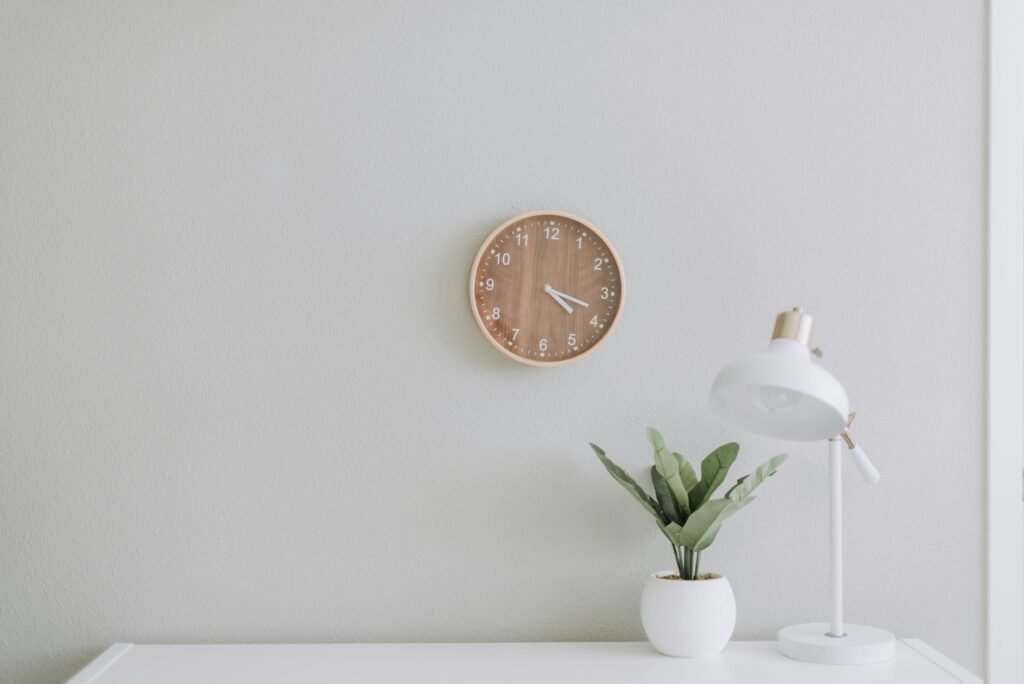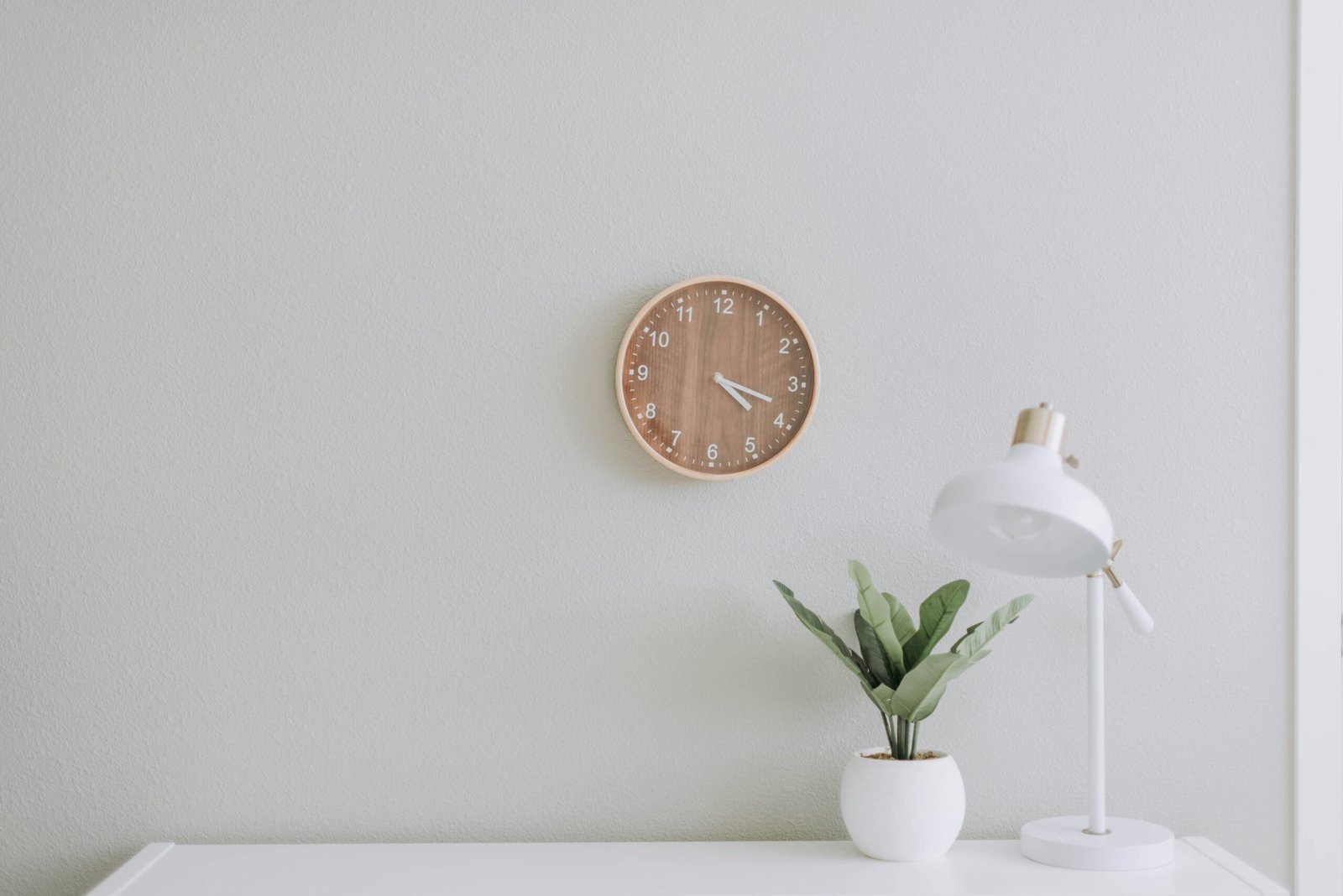Are you ready to take your fitness routine to the next level by setting up a home gym? Before you start buying equipment and setting up your workout space, it is crucial to understand the importance of home gym safety basics. With the convenience and comfort that a home gym brings, there are potential risks that you need to be aware of in order to create a safe and effective workout environment. From proper equipment maintenance to adequate space and ventilation, this article will guide you through the essential safety measures that every aspiring home gym owner should know. So, let’s dive into the important aspects of home gym safety and ensure that your fitness journey starts off on the right foot.

This image is property of images.unsplash.com.
Choosing the Right Equipment
When it comes to setting up a home gym, the first step is to choose the right equipment. This decision should be based on your fitness goals and personal preferences. Whether you want to focus on strength training, cardio, or a combination of both, selecting the appropriate equipment is crucial.
Consider Your Fitness Goals
Before investing in any equipment, take a moment to consider your fitness goals. Are you aiming to build strength, improve cardiovascular fitness, or lose weight? Understanding your objectives will help you choose the right equipment that can effectively support and facilitate your fitness journey.
For example, if your goal is to build muscle and increase strength, you may want to consider investing in a set of dumbbells, a weight bench, and resistance bands. On the other hand, if you are more interested in improving cardiovascular health, a treadmill, stationary bike, or elliptical machine may be more suitable.
Research Equipment Specifications and Safety Features
Once you have a clear understanding of your fitness goals, it is important to thoroughly research the equipment you plan to purchase. Look into the specifications and features of each item to ensure they align with your needs and preferences.
When it comes to safety, always prioritize equipment that has built-in safety features. For example, weight machines with safety rails or adjustable safety arms can provide an extra layer of protection when lifting heavy weights. Additionally, pay attention to weight capacity to ensure that the equipment can safely accommodate your body weight or the weight you plan to lift.
Check for Product Recalls
Before making any purchases, it is essential to check for product recalls. Manufacturers may issue recalls for various reasons, such as faulty design or safety concerns. By checking for recalls, you can ensure that the equipment you choose is reliable and free from any known safety issues.
To check for recalls, visit the manufacturer’s website or consult reputable consumer safety organizations. Doing so will give you peace of mind knowing that you have made an informed decision and have taken the necessary steps to ensure your safety while using the equipment.
Setting up Your Home Gym
Once you have selected the right equipment, it’s time to set up your home gym. Creating a suitable space for your workouts is important to ensure a comfortable and efficient exercise environment.
Designate a Suitable Space
When choosing a space for your home gym, consider the layout and size of the room. Ideally, it should be a room that offers enough space for your equipment without feeling cramped. If you have limited space, try to maximize the area by utilizing wall-mounted equipment or folding options.
Additionally, it is important to choose a room that can be dedicated solely to your home gym. This will help minimize distractions and create a focused environment that enhances your workout experience.
Ensure Adequate Ventilation and Lighting
Proper ventilation and lighting are essential for a safe and comfortable workout environment. Poor ventilation can lead to a buildup of stale air, resulting in decreased oxygen levels and increased humidity. This can make your workouts feel more challenging and can even pose health risks.
To ensure adequate ventilation, consider installing a fan or opening windows during your workouts. This will help circulate fresh air and maintain a comfortable temperature in the room.
In terms of lighting, opt for bright and evenly distributed light sources. Insufficient lighting can not only make it difficult to see your surroundings, but it can also increase the risk of accidents and injuries. Natural light is ideal, but if that is not possible, ensure that the room is well-lit with artificial lighting.
Install Mirrors and Proper Flooring
Mirrors are a valuable addition to any home gym as they serve multiple purposes. Firstly, they allow you to monitor and correct your form during exercises, which is essential for preventing injuries and maximizing results. Secondly, mirrors create the illusion of a larger space, making your home gym feel more open and inviting.
When it comes to flooring, choose an option that is suitable for your workout routine. Hardwood, rubber, or foam flooring are all great choices as they provide cushioning and stability. Avoid using carpet as it can be slippery and may hinder your movements during certain exercises.

This image is property of images.unsplash.com.
Using Equipment Properly
Using your home gym equipment correctly is crucial to your safety and the effectiveness of your workouts. Here are some key tips to ensure that you are using the equipment properly:
Read and Follow Instruction Manuals
Every piece of equipment comes with an instruction manual, and it is important to read and familiarize yourself with the guidelines provided. The manual will outline the correct setup, usage, and any safety precautions specific to that equipment.
By following the manufacturer’s instructions, you can ensure that you are using the equipment in the intended manner and reduce the risk of accidents or injuries.
Start with Warm-Up Exercises
Before diving into your workout, always start with a warm-up routine. This helps prepare your body for the upcoming physical demands and reduces the risk of strains or sprains.
A proper warm-up should include dynamic stretching exercises that target the major muscle groups you will be working on during your session. This can involve movements such as arm circles, leg swings, or light jogging on the spot.
Use Spotters for Heavy Weights
If your home gym includes weightlifting equipment, such as barbells or dumbbells, it is important to use spotters when lifting heavy weights. Spotters are individuals who can assist you during your workouts, ensuring your safety and providing the necessary support if you reach your limit.
Never attempt to lift heavy weights without a spotter, as it can lead to serious injuries if you are unable to control the weight or if you experience muscle fatigue.
Wearing Appropriate Attire
Wearing the right attire when exercising in your home gym not only enhances your comfort but also plays a role in your safety. Here are some guidelines to help you choose the appropriate attire:
Wear Comfortable and Breathable Clothing
When selecting workout clothing, prioritize comfort and breathability. Opt for materials that wick away sweat and allow for unrestricted movement. Avoid tight or restrictive clothing that can limit your range of motion or cause discomfort during intense workouts.
Lightweight fabrics such as polyester or moisture-wicking blends are ideal for keeping you cool and dry during exercise. Additionally, choose clothing that fits well and does not present any tripping hazards.
Wear Proper Footwear with Good Traction
Choosing the right footwear is essential to provide stability and support during your workouts. Invest in a pair of athletic shoes that are designed for your specific type of exercise. For example, if you primarily engage in cardio exercises, consider running shoes with extra cushioning and shock absorption. If you focus on weightlifting, opt for shoes with a flat sole for better stability.
Good traction is another important factor to consider when selecting footwear. Shoes with non-slip soles will help prevent slips and falls, especially if your home gym floor becomes sweaty or slippery during your workouts.
Use Protective Equipment as Needed
Certain forms of exercise may require additional protective equipment to ensure your safety. For example, if you engage in contact sports or heavy bag training, wearing gloves and padding can help protect your hands and wrists from injuries.
If you are unsure whether you need any specific protective equipment, it is always best to consult with a professional or research industry guidelines to ensure you are adequately protected.

This image is property of images.unsplash.com.
Maintaining a Clean and Organized Environment
A clean and organized home gym is not only visually appealing but also essential for maintaining a safe exercise environment. Here are some tips on how to maintain cleanliness and organization in your home gym:
Clean Equipment Regularly
Regularly cleaning your home gym equipment is crucial for preventing the buildup of bacteria, dirt, and sweat. Use appropriate cleaning solutions recommended by the manufacturer to disinfect the equipment and wipe away any visible grime.
Frequently touched surfaces, such as handles and bars, should receive extra attention. Consider creating a schedule for deep cleaning to ensure that all equipment is regularly sanitized.
Organize Equipment to Prevent Clutter
Clutter can be both a distraction and a safety hazard. Keep your equipment organized and stored in designated areas to prevent tripping hazards or accidental injuries.
Invest in storage solutions such as racks or shelves to keep weights, resistance bands, or other small items neatly stored. Hooks or pegboards can be useful for hanging items such as jump ropes or yoga mats.
Check for Loose or Damaged Parts
Regularly inspect your equipment for loose or damaged parts. Loose bolts, frayed cables, or worn-out grips are all signs that maintenance or repairs may be necessary.
Address any issues promptly to ensure the equipment remains safe and functional. If you are unsure about how to repair or replace certain parts, contact the manufacturer or seek the assistance of a professional to avoid any potential risks.
Avoiding Common Injuries
Injuries can derail your fitness journey and hinder progress. To prevent common injuries, it is important to listen to your body, use proper form and technique, and avoid overexertion. Here are some tips to keep in mind:
Listen to Your Body and Rest as Needed
One of the most important aspects of injury prevention is listening to your body’s signals and knowing when to rest. Pushing through excessive fatigue or ignoring pain can lead to overuse injuries and setbacks.
If you experience pain, discomfort, or excessive fatigue during your workouts, take a break. Allow your body time to recover and heal before resuming your exercise routine.
Use Proper Form and Technique
Using proper form and technique during exercise is crucial for preventing injuries. Improper form can place unnecessary stress on your joints and muscles, increasing the risk of strains, sprains, or other injuries.
Take the time to learn and practice correct form for each exercise you perform. If you are unsure about proper technique, consider consulting with a personal trainer or gym instructor who can guide you and provide valuable feedback.
Avoid Overexertion and Gradually Increase Intensity
Overexertion is a common cause of injuries, especially for individuals who are new to exercise or returning after a long break. It is important to avoid pushing yourself too hard, too soon.
Gradually increase the intensity and duration of your workouts to allow your body to adapt and build strength. Pushing yourself beyond your limits can lead to muscle strains, joint pain, or other injuries. Remember, slow and steady progress is key to long-term success.
Implementing Safety Measures
In addition to understanding and implementing safety practices during your workouts, it is equally important to be prepared for any emergencies or accidents that may occur. Here are some safety measures to consider:
Have an Emergency Plan
Create an emergency plan specific to your home gym. This plan should include contact information for emergency services, as well as any relevant medical information that might be needed in case of an emergency.
Share this plan with family members or individuals who live with you, and ensure that everyone knows what to do in case of an accident or injury.
Keep First Aid Kit Easily Accessible
Having a well-stocked first aid kit readily available can be a lifesaver in case of minor injuries or accidents. Ensure that your first aid kit is easily accessible and contains essentials such as adhesive bandages, antiseptic wipes, cold packs, and any personal medications you may need.
Regularly check the contents of your first aid kit and replenish any items that have been used or expired.
Know How to Use Safety Features on Equipment
Familiarize yourself with the safety features present on your home gym equipment. For example, weight machines may have safety pins or locks that prevent the weights from accidentally falling. Treadmills often have an emergency stop button that immediately halts the machine in case of a mishap.
Understanding how to use these safety features and regularly checking their functionality can greatly reduce the risk of accidents and injuries.
Supervising Children and Pets
If you have children or pets at home, it is crucial to take additional safety precautions to protect them from potential hazards in your home gym environment.
Keep Children and Pets Away from Equipment
Children and pets should not be allowed in the home gym area during your workouts. Equipment with moving parts, such as treadmills or exercise bikes, can be dangerous if not used properly.
To ensure their safety, establish clear boundaries and keep the home gym off-limits when you are exercising. Consider using baby gates or closed doors to prevent access and provide a safe play area for children and pets in a different part of the house.
Teach Children About Proper Gym Etiquette
If your children are old enough to understand, teach them about proper gym etiquette and safety measures. Explain the importance of not touching the equipment without supervision and of respecting the designated gym area.
Encourage them to develop healthy habits by explaining the benefits of regular exercise, and consider involving them in age-appropriate exercises or activities outside of the home gym.
Never Leave Children Unattended in the Home Gym
Under no circumstances should you leave children unattended in the home gym, even for a short period. Accidents can happen quickly, and it is essential to have someone responsible for supervising children at all times.
If you need to step away from your workout momentarily, ensure that another adult is present to watch over the children, or adjust your workout schedule to coincide with times when someone else can provide supervision.
Seeking Professional Guidance
If you are new to working out or have specific fitness goals, seeking professional guidance can greatly enhance your safety and progress. Here are some options to consider:
Consult with a Personal Trainer or Gym Instructor
Working with a certified personal trainer or gym instructor can provide you with personalized guidance, tailored workout plans, and feedback on your form and technique.
A professional can assess your fitness level, help you set realistic goals, and design a workout program that suits your needs. Their expertise ensures that you are using the equipment correctly, thus minimizing the risk of injuries.
Take Advantage of Online Resources and Tutorials
In addition to in-person guidance, there is an abundance of online resources and tutorials available that can help you navigate your home workouts safely.
Reputable fitness websites, online fitness communities, and YouTube channels offer a wealth of information, exercise demonstrations, and workout routines. However, it is important to choose reliable sources and verify the credentials of the individuals providing the information.
Consider Virtual or In-Person Training Sessions
With the rise of technology, virtual training sessions have become increasingly popular. Virtual training allows you to exercise under the guidance of a professional from the comfort of your home. This option is especially beneficial if you prefer one-on-one interaction and personalized coaching.
Alternatively, if in-person training is more appealing to you, consider working with a personal trainer or participating in group fitness classes at a local gym. Group classes provide the added benefit of camaraderie and motivation that can help you stay motivated and accountable.
Staying Hydrated and Well-Nourished
Hydration and proper nutrition play a crucial role in maintaining your energy levels, supporting muscle recovery, and optimizing your overall health and performance. Here are some key considerations:
Drink Plenty of Water Before, During, and After Exercise
Hydration is essential before, during, and after your workouts. Proper hydration helps regulate your body temperature, lubricates your joints, and provides your muscles with the necessary fluids to function optimally.
Make sure to drink water before your workout to ensure you are adequately hydrated. During your workout, sip water regularly, especially if you are exercising for an extended period or engaging in intense activities that cause significant sweating. After your workout, continue to hydrate to replenish the fluids lost during exercise.
Follow a Balanced Diet to Support Muscle Recovery
Eating a balanced diet that includes an adequate amount of protein, carbohydrates, and healthy fats is essential for muscle recovery and overall health. Protein helps repair and build muscles, while carbohydrates provide the energy needed for workouts.
Incorporate lean proteins such as chicken, fish, or tofu into your meals, and include a variety of fruits, vegetables, whole grains, and healthy fats. Avoid relying solely on supplements and prioritize whole food sources to ensure you are getting a wide range of nutrients.
Avoid Exercising on an Empty Stomach
Exercising on an empty stomach can leave you feeling fatigued, lightheaded, and unable to perform at your best. It is important to fuel your body with a light meal or snack before your workouts.
Consider having a balanced meal or snack that includes carbohydrates for energy and a small amount of protein for muscle repair. Oatmeal with fruit, yogurt, or a small protein shake are all great options that can provide the necessary fuel without weighing you down.
By following these safety guidelines and implementing the appropriate measures, you can create a home gym environment that promotes both safety and productivity. Remember, taking the time to set up your home gym properly and investing in the right equipment will go a long way in ensuring a safe and enjoyable fitness experience.
